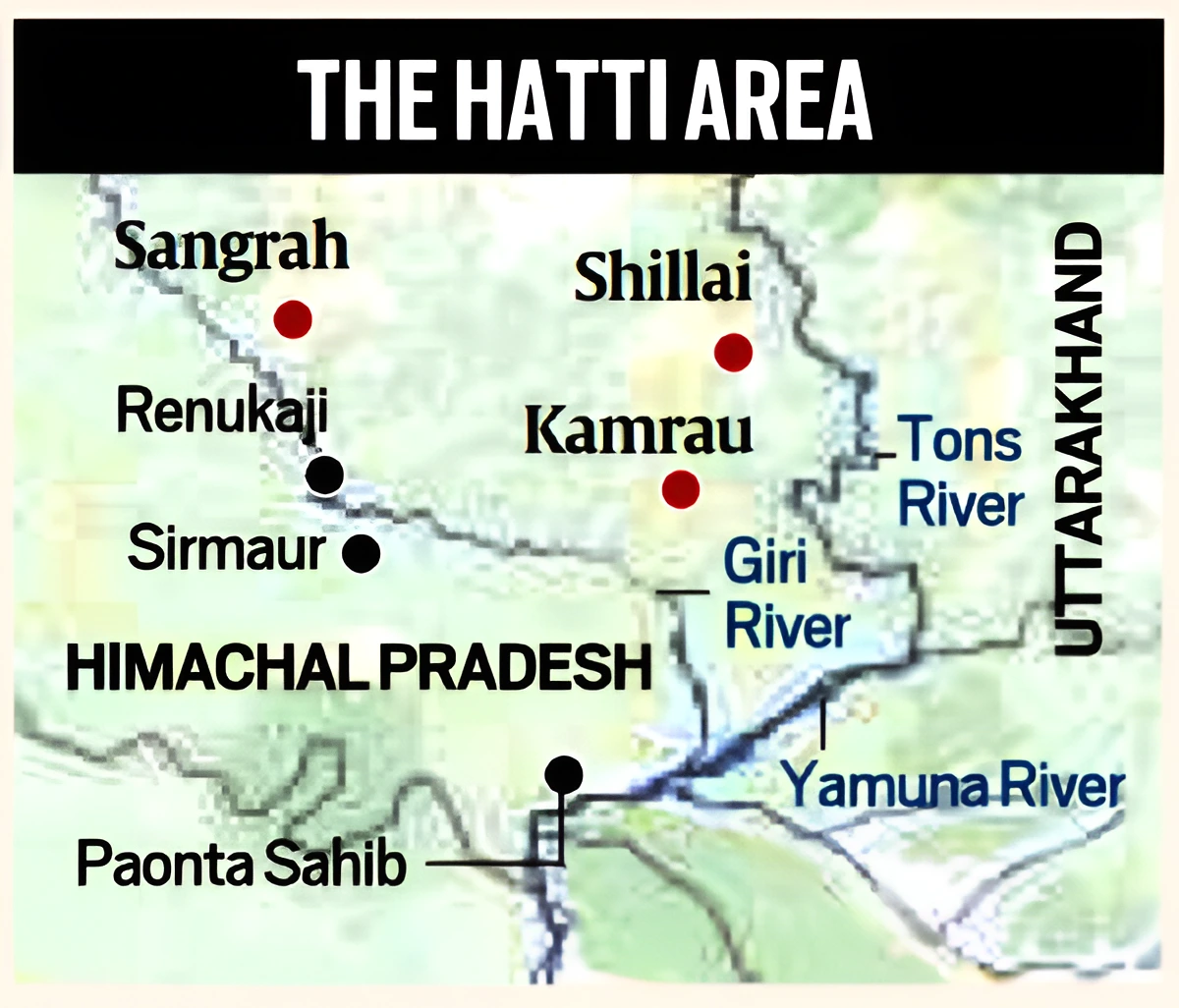Context: Recently, the Himachal Pradesh government has issued a notification granting Scheduled Tribe (ST) status to the Hatti community in the Trans-Giri area of Sirmaur district.
Himachal Govt Issues Notification to Grant ST Status to Hatti Community
- Issue of Notification: On August 4, 2023, the Government of India had notified the Constitution (Schedule Tribes) Order (Second Amendment) Act, 2023 in the Gazette to give ST status to the Hatti community.
- Passing of the Bill: The Constitution (Scheduled Tribes) Order (Third Amendment) Bill, 2022 passed in the Lok Sabha on December 16, 2022 for the inclusion of Hattee community in the list of ST in relation to Himachal Pradesh.

About Hatti Community
- The Hatti Community is a close-knit community who got their name from their tradition of selling homegrown vegetables, crops, meat and wool etc., at small markets called ‘haat’ in towns.
- Follow a Rigid Caste System: The Bhat and Khash are upper castes, and the Badhois are below them, and they discouraged inter-caste marriages.
- Khumbli for Decision: The Hattis are governed by a traditional council called Khumbli, which like the Khaps of Haryana, decide community matters.
- The Khumbli’s power has remained unchallenged despite the establishment of the Panchayati Raj System.
Demand by Hatti Community for Scheduled Tribe (ST) Status:
- On the Lines of the Jaunsar-Bawar area of Uttarakhand: There are two Hatti clans, in Trans-Giri and Jaunsar Bawar, both had remained the part of erstwhile Sirmaur princely state and both areas have unique similarity in social, cultural as well as geographical aspects.
- Residents of the Trans-Giri area were demanding ST status similar to the Jaunsar-Bawar area, which received ST status in 1967 itself.
About the Process of Inclusion of Communities under List of STs:
- Origin of Proposal: According to the modalities for inclusion first framed in 1999, the proposal for inclusion must originate from the respective State or Union Territory government.
- Processing by Office of the Registrar General of India: The proposal is sent to the Union Tribal Affairs Ministry, which sends it to the Office of the Registrar General of India (ORGI).
- Role of National Commission for Scheduled Tribes: If the ORGI approves the inclusion, the proposal is forwarded to the National Commission for Scheduled Tribes.
- Approval by Cabinet: Only after the concurrence of these institutions, the proposal goes forward to the Cabinet to bring in the appropriate amendment to the Constitution (Scheduled Tribes) Order, 1950.
- Final Decision:The final decision rests with the President’s office issuing a notification specifying the changes under powers vested in it from Articles 342.
Benefits of Inclusion of Communities under List of STs:
- Reservation: In educational institutions under Article 15(4) of the Indian Constitution.
- In posts and services under Article 16(4), 16(4A) and 16(4B) of the Indian Constitution.
- Representation: Reservation of seats for STs in the Lok Sabha under Article 330.
- Reservation of Seats for STs in Panchayats Article 243D.
About Scheduled Tribes in India:
- Article 366 (25): It defined scheduled tribes as “such tribes or tribal communities or parts of or groups within such tribes or tribal communities as are deemed under Article 342 to be Scheduled Tribes for the purposes of this constitution”.
- Article 342: It prescribes procedure to be followed in the matter of specification of scheduled tribes.
- The Essential Characteristics of STs: Primitive Traits, Geographical Isolation, Distinct Culture, Shy of Contact with Community at large and Economically Backward.
- Associated Committees:
- Lokur Committee (1965)
- Bhuria Commission (2002-2004)
- Xaxa Committee (2013)
- Particularly Vulnerable Tribal Groups (PVTGs): These are 75 in number, which are characterized by:
- Pre-agriculture level of technology
- Stagnant or declining population
- Extremely low literacy
- Subsistence level of economy
Must Read: Scheduled Areas In India, here.
News Source: The Hindu/ The Times of India
To get PDF version, Please click on "Print PDF" button.

